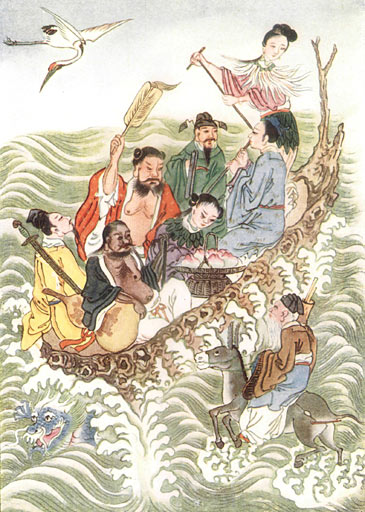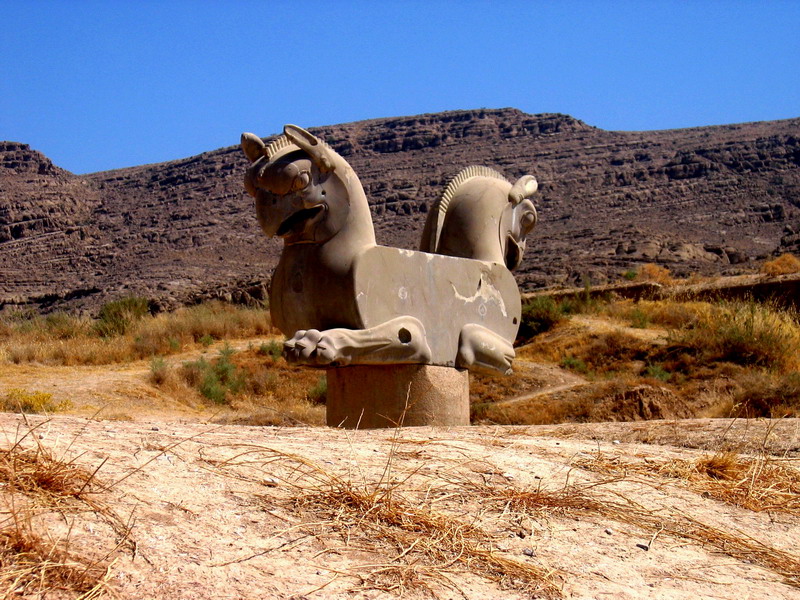|
õ╗Ö
''Xian'' () refers to a person or similar entity having a long life or being immortal. The concept of ''xian'' has different implications dependent upon the specific context: philosophical, religious, mythological, or other symbolic or cultural occurrence. The Chinese word ''xian'' is translatable into English as: * (''in Daoist philosophy and cosmology'') spiritually immortal; transcendent human; celestial being * (''in Daoist religion and pantheon'') physically immortal; immortal person; an immortal; saint * (''in Chinese alchemy'') alchemist; one who seeks the elixir of life; one who practices longevity techniques ** (''or by extension'') alchemical, dietary, or qigong methods for attaining immortality * (''in Chinese mythology'') wizard; magician; shaman; sorcerer * (''in popular Chinese literature'') genie; elf, fairy; nymph; (''xian jing'' is fairyland, faery) * (''based on the folk etymology for the character , a compound of the characters for ''person'' and ''m ... [...More Info...] [...Related Items...] OR: [Wikipedia] [Google] [Baidu] |
Sennin
''Xian'' () refers to a person or similar entity having a long life or being immortal. The concept of ''xian'' has different implications dependent upon the specific context: philosophical, religious, mythological, or other symbolic or cultural occurrence. The Chinese word ''xian'' is translatable into English as: * (''in Daoist philosophy and cosmology'') spiritually immortal; transcendent human; celestial being * (''in Daoist religion and pantheon'') physically immortal; immortal person; an immortal; saint * (''in Chinese alchemy'') alchemist; one who seeks the elixir of life; one who practices longevity techniques ** (''or by extension'') alchemical, dietary, or qigong methods for attaining immortality * (''in Chinese mythology'') wizard; magician; shaman; sorcerer * (''in popular Chinese literature'') genie; elf, fairy; nymph; (''xian jing'' is fairyland, faery) * (''based on the folk etymology for the character , a compound of the characters for ''person'' and ''mountain ... [...More Info...] [...Related Items...] OR: [Wikipedia] [Google] [Baidu] |
Eight Immortals
The Eight Immortals () are a group of legendary ''xian'' ("immortals") in Chinese mythology. Each immortal's power can be transferred to a vessel () that can bestow life or destroy evil. Together, these eight vessels are called the "Covert Eight Immortals" (). Most of them are said to have been born in the Tang or Song Dynasty. They are revered by the Taoists and are also a popular element in secular Chinese culture. They are said to live on a group of five islands in the Bohai Sea, which includes Mount Penglai. The Immortals are: * He Xiangu (), in modern context generally seen as the only female of the group, often depicted holding a lotus flower. * Cao Guojiu (), related to a Song dynasty emperor before he became an immortal. * Li Tieguai (), considered to be mentally disturbed and associated with medicine and easing the suffering of the sick and needy, identified by his iron crutch and Calabash bottle. * Lan Caihe (), originally pictured as female later developed an ambiguous ... [...More Info...] [...Related Items...] OR: [Wikipedia] [Google] [Baidu] |
Huli Jing
Huli jing () are Chinese mythological creatures usually capable of shapeshifting, who may either be benevolent or malevolent spirits. In Chinese mythology and folklore, the fox spirit takes variant forms with different meanings, powers, characteristics, and shapes, including ''huxian'' (), ''hushen'' (), ''husheng'' (), ''huwang'' (), ''huyao'' (), and ''jiuweihu'' (). Fox spirits and nine-tailed foxes appear frequently in Chinese folklore, literature, and mythology. Depending on the story, the fox spirit's presence may be a good or a bad omen. The motif of nine-tailed foxes from Chinese culture was eventually transmitted and introduced to Japanese and Korean cultures. Descriptions The nine-tailed fox occurs in the ''Shanhaijing'' (''Classic of Mountains and Seas''), compiled from the Warring States period to the Western Han period (circa fourth to circa first century BC). The work states: In chapter 14 of the ''Shanhaijing'', Guo Pu, a scholar of the Eastern Jin dynasty, ... [...More Info...] [...Related Items...] OR: [Wikipedia] [Google] [Baidu] |
Xianren Cave
The Xianren Cave (, ''Xi─ünr├®nd├▓ng''), together with the nearby Diaotonghuan (, ''Di├ĀotŪÆnghu├Īn'') rock shelter, is an archaeological site in Dayuan Township (), Wannian County in the Jiangxi province, China and a location of historically important discoveries of prehistoric pottery shards and it bears evidence of early rice cultivation. The cave's name refers to the legendary Chinese enlightened people, the Xian "immortals". The cave is high, wide, and deep. A 2012 publication in the ''Science'' journal, announced that the earliest pottery yet known anywhere in the world was found at this site dating by radiocarbon to between 20,000 and 19,000 years before present, at the end of the Last Glacial Period. The carbon 14 datation was established by carefully dating surrounding sediments. Many of the pottery fragments had scorch marks, suggesting that the pottery was used for cooking. These early pottery containers were made well before the invention of agriculture (dated to ... [...More Info...] [...Related Items...] OR: [Wikipedia] [Google] [Baidu] |
Sino-Tibetan Languages
Sino-Tibetan, also cited as Trans-Himalayan in a few sources, is a family of more than 400 languages, second only to Indo-European in number of native speakers. The vast majority of these are the 1.3 billion native speakers of Chinese languages. Other Sino-Tibetan languages with large numbers of speakers include Burmese (33 million) and the Tibetic languages (6 million). Other languages of the family are spoken in the Himalayas, the Southeast Asian Massif, and the eastern edge of the Tibetan Plateau. Most of these have small speech communities in remote mountain areas, and as such are poorly documented. Several low-level subgroups have been securely reconstructed, but reconstruction of a proto-language for the family as a whole is still at an early stage, so the higher-level structure of Sino-Tibetan remains unclear. Although the family is traditionally presented as divided into Sinitic (i.e. Chinese) and Tibeto-Burman branches, a common origin of the non-Sinitic languages has n ... [...More Info...] [...Related Items...] OR: [Wikipedia] [Google] [Baidu] |
Arabic
Arabic (, ' ; , ' or ) is a Semitic languages, Semitic language spoken primarily across the Arab world.Semitic languages: an international handbook / edited by Stefan Weninger; in collaboration with Geoffrey Khan, Michael P. Streck, Janet C. E.Watson; Walter de Gruyter GmbH & Co. KG, Berlin/Boston, 2011. Having emerged in the 1st century, it is named after the Arabs, Arab people; the term "Arab" was initially used to describe those living in the Arabian Peninsula, as perceived by geographers from ancient Greece. Since the 7th century, Arabic has been characterized by diglossia, with an opposition between a standard Prestige (sociolinguistics), prestige languageŌĆöi.e., Literary Arabic: Modern Standard Arabic (MSA) or Classical ArabicŌĆöand diverse vernacular varieties, which serve as First language, mother tongues. Colloquial dialects vary significantly from MSA, impeding mutual intelligibility. MSA is only acquired through formal education and is not spoken natively. It is ... [...More Info...] [...Related Items...] OR: [Wikipedia] [Google] [Baidu] |
Persian Language
Persian (), also known by its endonym Farsi (, ', ), is a Western Iranian language belonging to the Iranian branch of the Indo-Iranian subdivision of the Indo-European languages. Persian is a pluricentric language predominantly spoken and used officially within Iran, Afghanistan, and Tajikistan in three mutually intelligible standard varieties, namely Iranian Persian (officially known as ''Persian''), Dari Persian (officially known as ''Dari'' since 1964) and Tajiki Persian (officially known as ''Tajik'' since 1999).Siddikzoda, S. "Tajik Language: Farsi or not Farsi?" in ''Media Insight Central Asia #27'', August 2002. It is also spoken natively in the Tajik variety by a significant population within Uzbekistan, as well as within other regions with a Persianate history in the cultural sphere of Greater Iran. It is written officially within Iran and Afghanistan in the Persian alphabet, a derivation of the Arabic script, and within Tajikistan in the Tajik alphabet, a der ... [...More Info...] [...Related Items...] OR: [Wikipedia] [Google] [Baidu] |
Persian Mythology
Persian mythology or Iranian mythology (Persian:ž¦ž│ž¦žĘ█īž▒ž┤┘垦ž│█ī ž¦█īž▒ž¦┘å█ī) is the body of the myths originally told by ancient Persians and other Iranian peoples, and a genre of Ancient Persian folklore. These stories concern the origin and nature of the world, the lives and activities of deities, heroes, and mythological creatures, and the origins and significance of the ancient Persians' own cult and ritual practices. Modern scholars study the myths to shed light on the religious and political institutions of not only modern-day Iran but the Greater Iran, which includes regions of West Asia, Central Asia, South Asia and Transcaucasia where Iranian culture has had significant influence. Historically, these were regions long ruled by dynasties of various Iranian empires, that incorporated considerable aspects of Persian culture through extensive contact with them, or where sufficient Iranian peoples settled to still maintain communities who patronize their respective cul ... [...More Info...] [...Related Items...] OR: [Wikipedia] [Google] [Baidu] |
Peri
In Persian mythology, peris (singular: peri; from fa, ┘Š┘Äž▒█ī, translit=par─½, , plural , ; borrowed in European languages through ota, ┘Š┘Äž▒█ī, translit=peri) are exquisite, winged spirits renowned for their beauty. Peris were later adopted by other cultures. They are described as mischievous beings that have been denied entry to paradise until they have completed penance for atonement. Under Islamic influence, Peris became benevolent spirits, in contrast to the mischievous jinn and evil ''Dev (mythology), divs'' (demons). Scholar indicates an Indo-Iranian origin for the character, who was later integrated into the Arab houri tale tradition. Etymology The Persian word comes from Middle Persian ''par─½g'', itself from Old Persian ''*parik─ü-''. The word has been borrowed in Azerbaijani language, Azerbaijani as ''p╔Öri'', in Hindustani language, Hindustani as ''par─½'' (Urdu: ┘Šž▒█ī / Hindi: Óż¬Óż░ÓźĆ) and in Turkish language, Turkish as ''peri''. In Persian mythology ... [...More Info...] [...Related Items...] OR: [Wikipedia] [Google] [Baidu] |
Edward H
Edward is an English given name. It is derived from the Anglo-Saxon name ''─Æadweard'', composed of the elements '' ─ōad'' "wealth, fortune; prosperous" and '' weard'' "guardian, protectorŌĆØ. History The name Edward was very popular in Anglo-Saxon England, but the rule of the Norman and Plantagenet dynasties had effectively ended its use amongst the upper classes. The popularity of the name was revived when Henry III named his firstborn son, the future Edward I, as part of his efforts to promote a cult around Edward the Confessor, for whom Henry had a deep admiration. Variant forms The name has been adopted in the Iberian peninsula since the 15th century, due to Edward, King of Portugal, whose mother was English. The Spanish/Portuguese forms of the name are Eduardo and Duarte. Other variant forms include French ├ēdouard, Italian Edoardo and Odoardo, German, Dutch, Czech and Romanian Eduard and Scandinavian Edvard. Short forms include Ed, Eddy, Eddie, Ted, Teddy and Ned. Pe ... [...More Info...] [...Related Items...] OR: [Wikipedia] [Google] [Baidu] |
Chinese Dictionary
Chinese dictionaries date back over two millennia to the Han dynasty, which is a significantly longer lexicographical history than any other language. There are hundreds of dictionaries for the Chinese language, and this article discusses some of the most important. Terminology The general term ''c├Łsh┼½'' (, "lexicographic books") semantically encompasses "dictionary; lexicon; encyclopedia; glossary". The Chinese language has two words for dictionary: ''zidian'' (character/logograph dictionary) for written forms, that is, Chinese characters, and ''cidian'' (word/phrase dictionary), for spoken forms. For character dictionaries, ''zidian'' () combines ''zi'' "character, graph; letter, script, writing; word") and ''dian'' "dictionary, encyclopedia; standard, rule; statute, canon; classical allusion"). For word dictionaries, ''cidian'' is interchangeably written /; ''c├ŁdiŪÄn''; ''tz╩╗┼Ł┬▓-tien┬│''; "word dictionary") or (/; ''c├ŁdiŪÄn''; ''tz╩╗┼Ł┬▓-tien┬│''; "word dictionary"); ... [...More Info...] [...Related Items...] OR: [Wikipedia] [Google] [Baidu] |






